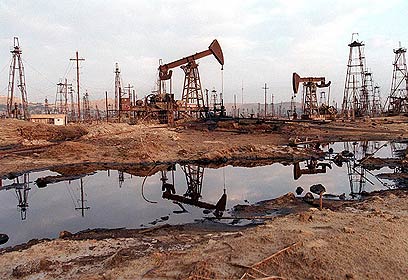The video started by discussing how before the 16th century, the UK was covered in deciduous broad leafed forest, which is our climatic climax vegetation. Whilst the balance between usage and production through growth of new biomass remained in balance, this was fine, but as we started to develop, and to require more fuel for cooking and heating, early industry and building, our forests were decimated, so that by the end of the 17th century, all but a few of our largest forests were gone. As the fuel supplies started to dwindle in the form of fuel wood, we were forced to seek alternatives, the first of which was coal. Readily available in the UK, close to the surface and easy to access in our northern coalfields, we started to mine the seams, following them underground to extract more of this "Stored Sunshine", as our demand for energy outstripped the rate at which photosynthesis could produce new material for us to burn.
This in turn, led to the development of the steam engine, first as a means to pump water out of ever deeper mine shafts to allow excess to deeper coal, but it was quickly adapted for motion, and became the steam engine as we know it today. Perhaps this is evidence for Boserups's early ideas on population, as our needs develop, we will develop the means to meet them?
Coal formed in most global deposits during the Carboniferous Period, between 360 and 300 million years ago in swamp environments when the worlds first early forests developed. The Lake Iain Stewart was diving in was in Oregon, and is called Clear Lake, but there are several other examples of forests that have been submerged in cold waters and preserved, the photo below is one from Kazakhstan called Lake Kaindy
The Carboniferous is so called due to the massive expansion in forest and plant growth, especially following the development of Bark bearing trees and the first growth of plants with Lignin, important, as the trees had bark that was particularly hard to degrade, there were bark to wood ratios of between 8:1 and 20:1 as opposed to modern day 1:4, lignin concentrations were higher in these early trees, meaning that the bark was toxic to most fungi and bacteria, so when the trees died, there were few organisms that could break it down. The other main reason as to why forest bloomed in this time period is because there was a significant fall in sea level which led to the development of massive lowland swamps, meaning a carboniferous scene may have looked lie the artists impression below:
The most significant long lasting effect of this period, was that this development of huge forests and trees, and the trapping of CO2 in swamps raised the level of oxygen in the atmosphere to as high as 35% (today it is 21%). This is one of the speculated reasons as to why later organisms (dinosaurs) could grow to such gigantic sizes due to the abundance of oxygen. The carboniferous ended with a significant ice age, but the forests remained buried in anoxic environments, and after subsequent layers of beds were laid down on top of them, they were compressed into coal.
So why is this important? This is where our excess CO2 production today comes from, we are now using up this coal resource, and releasing this carbon that was captured during the carboniferous back into our atmosphere. The fact that the UK during the early Carboniferous had vast swamps and deltas, and we developed extensive coal reserves, meant we were one of the first countries to develop a coal based economy, the driver behind our industrial revolutions early start.
So, why were we one of the first countries to develop our coal based industry? There is another country with even larger readily accessible coal reserves, which was technologically advanced at an early stage in history, but didn't keep pace with the UK. China's coal reserves are now one of the Climate Change camps most significant concerns. The reason China has not exploited them until recently, is two fold. Firstly, being such a large country, their focus on meeting needs was running the empire, the second problem, is that China's coal fields are far inland, up the impassable Yellow River, filled with treacherous rapids (a product of the local geology) and a shallow dangerous river regime for large boats:
But, we have studied the Mississippi in the Rivers module, this river has been extensively managed for shipping since the mid 19th century, so why didn't China manage the smaller Yellow river? They didn't need to, China's main trade was via the sea, most of its large developing cities were on the coast, whereas America had to manage the Mississippi flooding to develop and to trade with the Interior, perhaps another one for the Population Optimists?
Onto Oil, when we ran out of coal, heavy, dirty and difficult to transport, we turned to its sister fossil fuel, Oil. Cleaner burning, more efficient, more mobile and with a wider range of applications, Oil was the natural preference to coal. The first city to see a boom in the oil trade was Naftalan in Azerbaijan. The location of the rather icky scene in the documentary where Iain takes a bath in some yummy crude oil. This is an old application for oil, its purported health benefits may seem comical now, but people have bathed in oil for a long time:
This picture from the 1930's is of the Naftalan treatment centre, which the Soviet Union invested heavily into to discover it holds any true benefits, the answer is possibly, it is a thermal treatment and has had some success treating arthritis and other muscular-skeletal disorders. The big question is, do you really fancy taking a bath in fossilised fish poo and plankton?? Like this guy:
To be honest, it doesn't appeal to me, but each to their own. Back to geography, is it really worth it? This is a photo of the Azeri oil fields, the level of contamination in the water is high and the scenery is blighted by the presence of hundreds of nodding donkeys:
The impact of this is that many streams an lakes around Baku are now biologically dead, and scenes like this one are not uncommon:
We will be coming onto geopolitics in class soon if you haven't started it already, but the point in the video was that oil is found by looking for salt, not something you need to worry about unless you are taking geology as well, in which case, you need to understand why, but here is a picture of Iran's Salt River, fed by the Salt glacier that Iain walked over, with some spectacular salt formations in it;
To end, the development of "Oily Rocks" of the coast of Azerbaijan during the 1950's was the first offshore drilling platform, and is quite unusual, it was one of the first oil pipelines laid, it hosts a temporary population of up to 3000 people working in two week shifts, its own power stations and entertainment facility.
So, that's it for this post, it has been fairly lengthy, but understanding this difference in the location of oil and the location of oil consumers is key to most of this module. Keep reading the student posts on their blogs which can be followed through mine, and if anyone else has another blog to add it would of course be much appreciated, just email me!
Millie










No comments:
Post a Comment